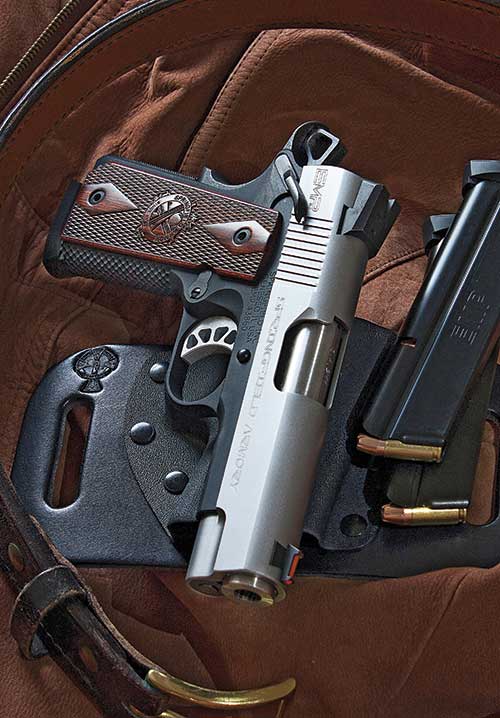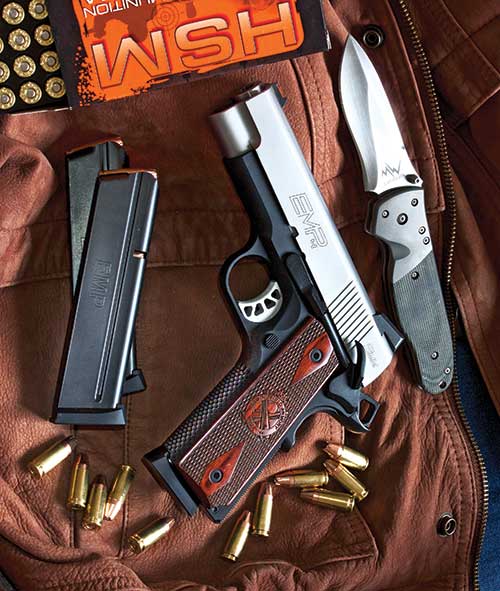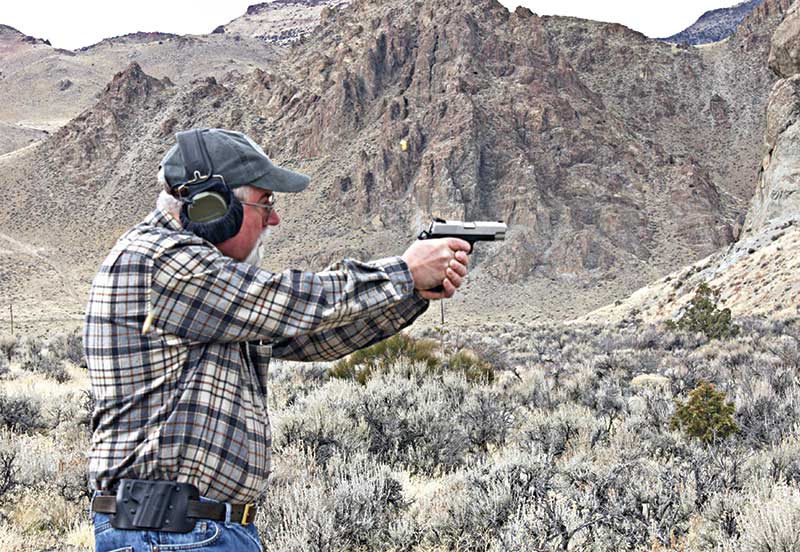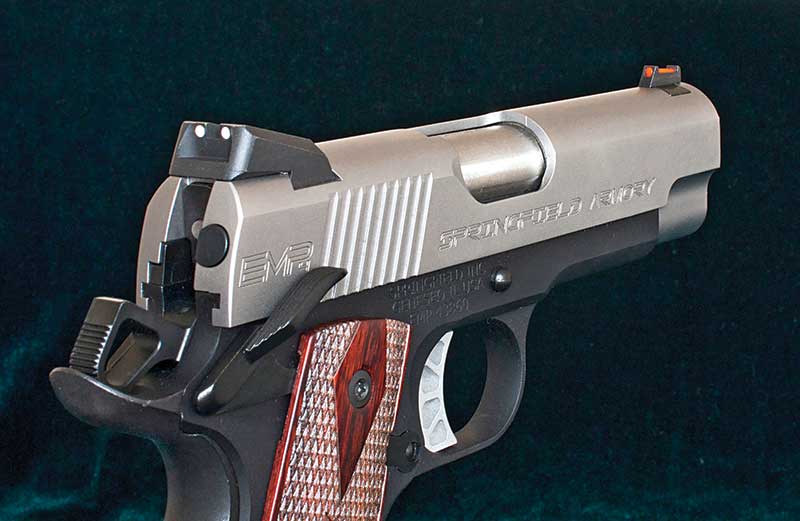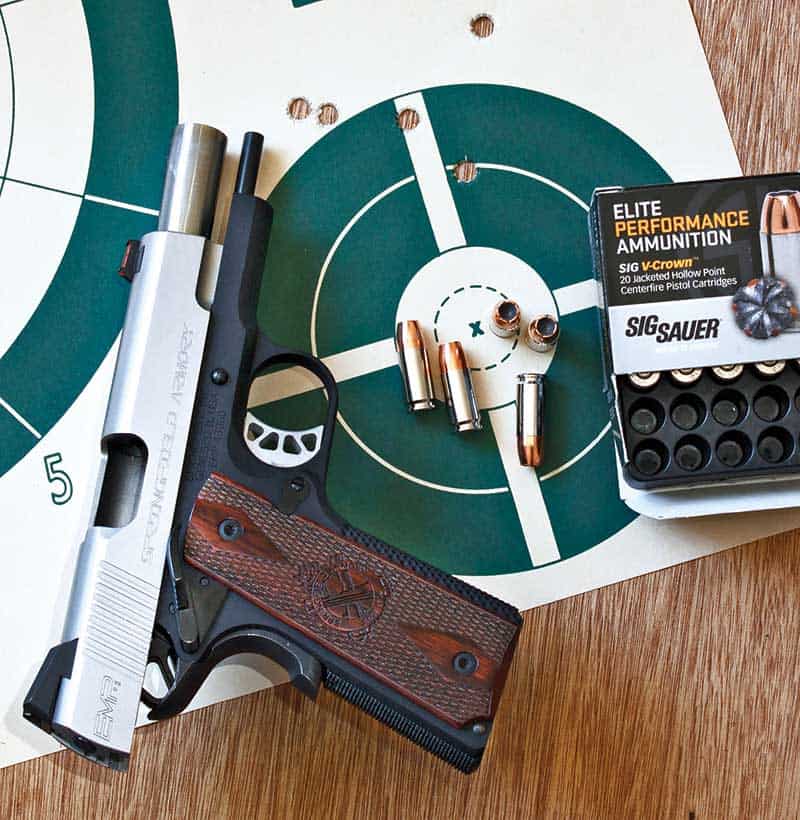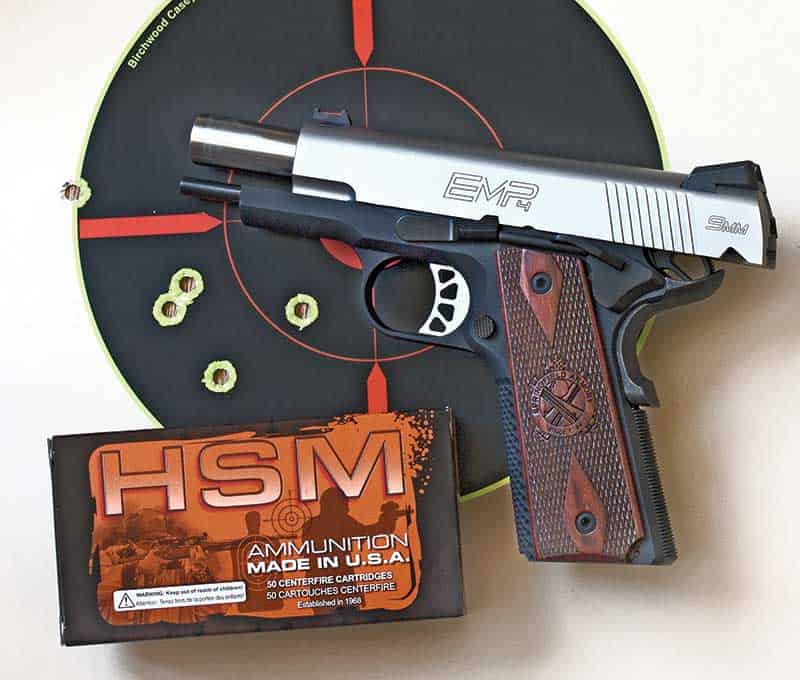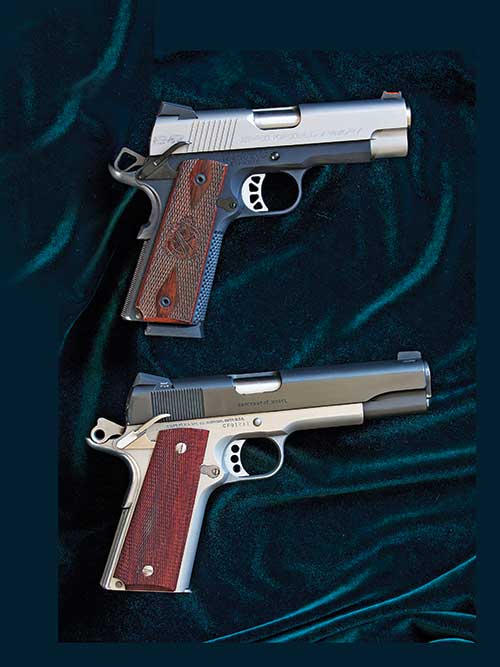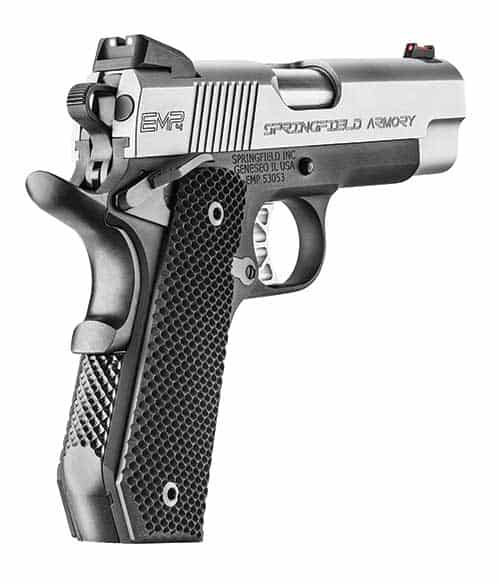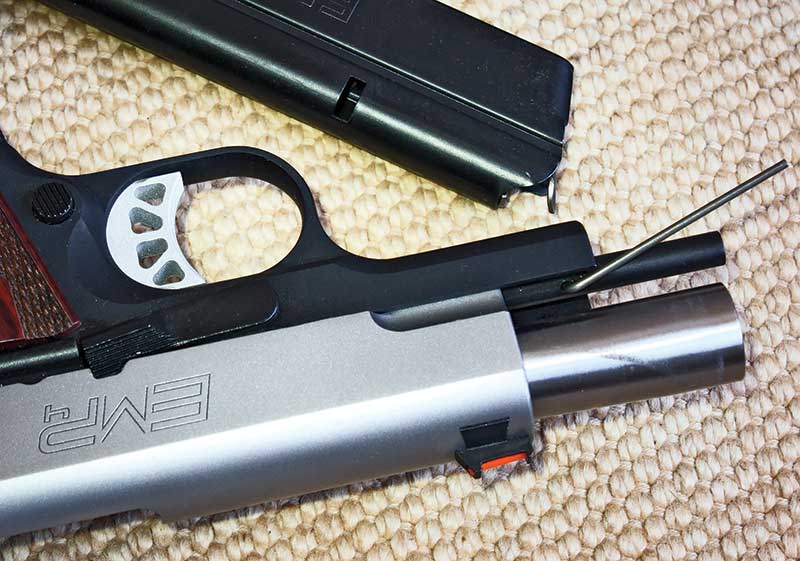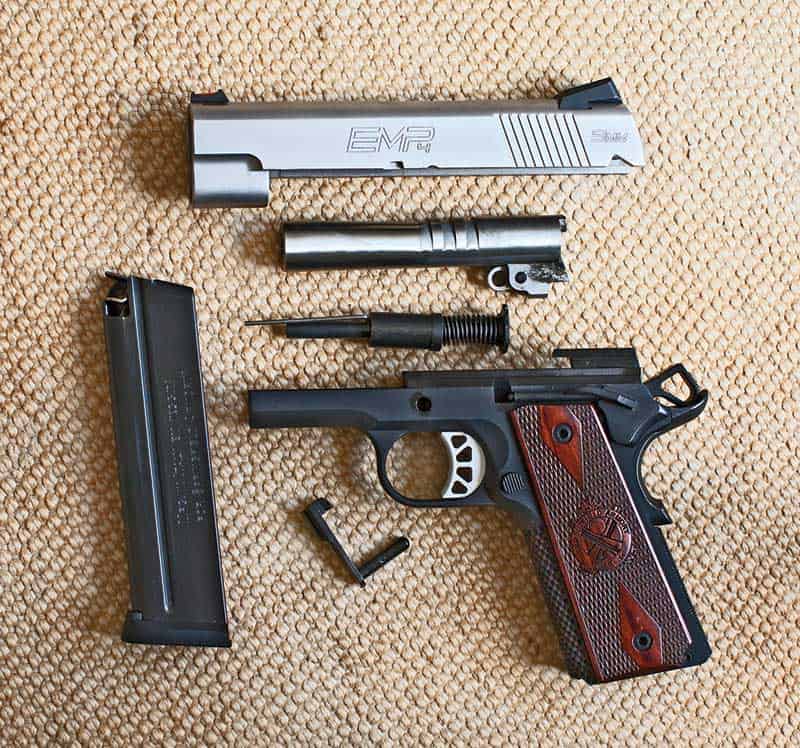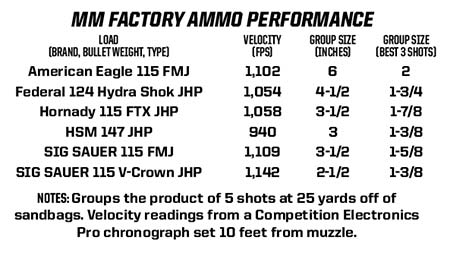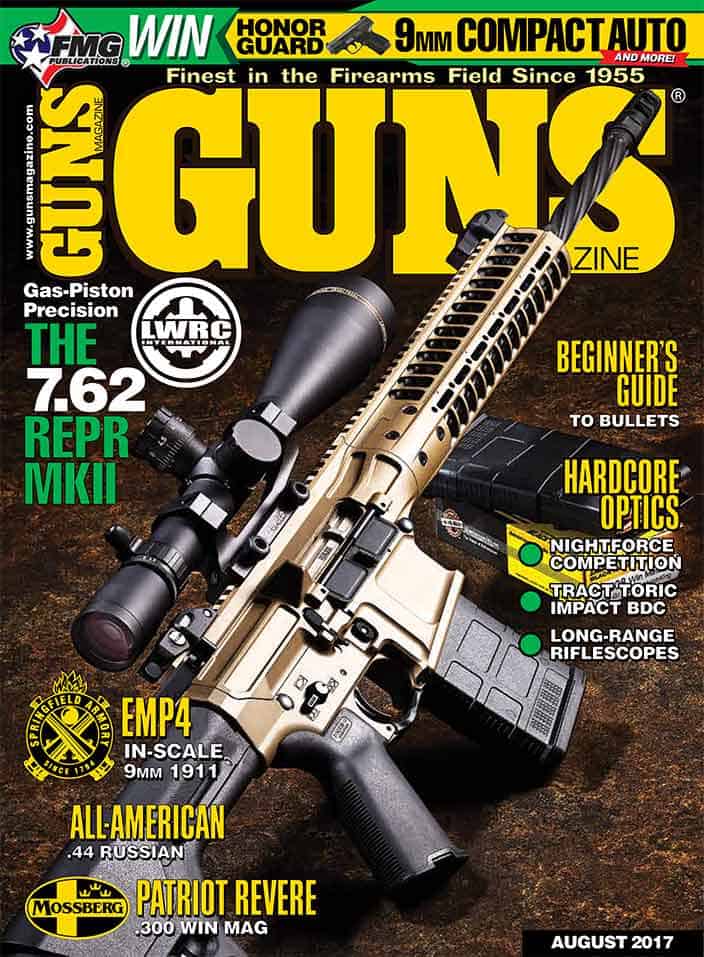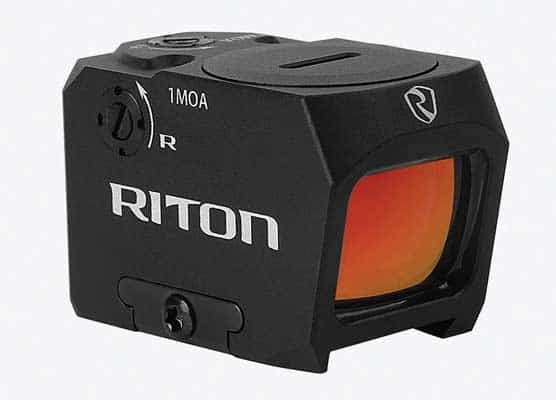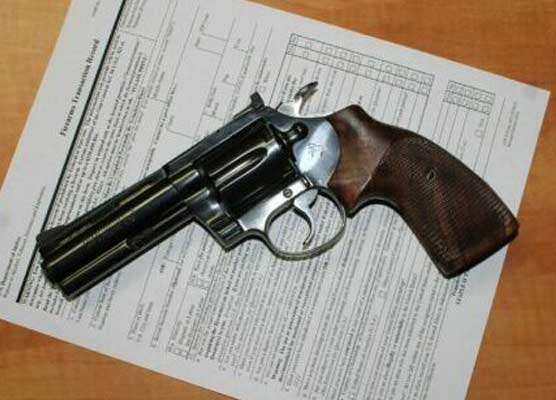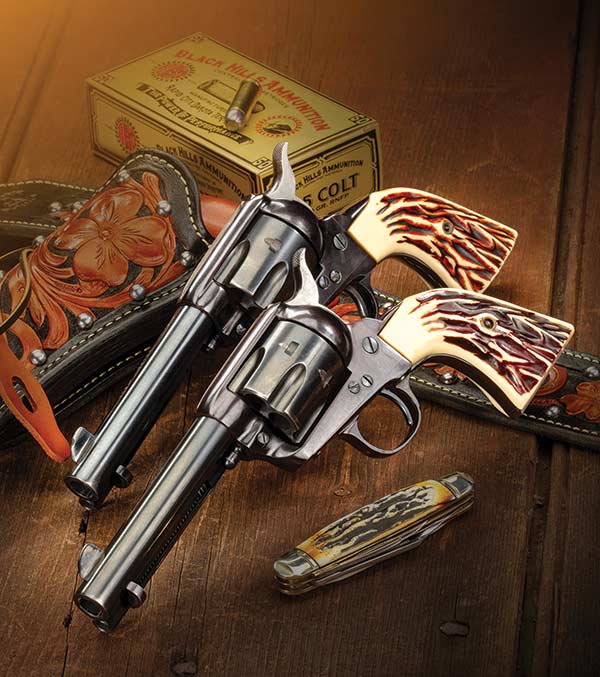Sights, Slide, Safety
The rear sight is a Novak low-profile style, with two white-paint-filled dots. The front is red fiber optic, and the gun comes with a spare red rod and a green rod. Both front and rear sights are set in dovetails and the rear is adjustable for windage, locked down by a setscrew.
You may have read about how fiber-optic front sights flare too brightly for us older, crabbier shooters (like me) to see well. To mitigate the problem, I just run a black Sharpie marking pen over it. Now the front sight just glows red in daylight and the problem is solved. The Sharpie ink wipes away with a little dab of mineral spirits or rubbing alcohol.
The slide is easy to rack, even with the hammer at rest. The slide serrations are angled and give a solid grip. The width of the slide is nearly the same as my Colt Commander (another plus: the EMP4 fits all my Commander holsters well). The slide stop is the same distance from my thumb as on a full-size 1911.
The safety is ambidextrous and, unlike many, there is no perceptible play in the right side lever. The safety requires little pressure to apply or disengage and—more importantly—it’s not mushy. It does not move until you push it “off” or “on” with an audible click.
The grip safety has a memory pad at the base to ensure you have it depressed when firing. The generously curved upper portion guides the web of your hand during the draw. The grip safety shows excellent fitting around the frame contour. The fit of the slide-ejector-to-frame at the back is superb. These handsome touches are usually only found on expensive custom pistols and indicate nice attention to detail on a factory gun.
The hammer is the currently fashionable “hollowed Commander style” and is well serrated on top. It nestles inside a notch on the grip safety and is easy to thumb cock or uncock. The trigger travels smoothly about 1/16 inch before it stops and breaks cleanly at 4 pounds on the nose. There’s no overtravel adjustment, and this trigger didn’t need it.
The magazine well is gently flared, and magazines go in easily. A pad on the floorplate adds 3/8 inch to the length of the magazine (and overall pistol height) to ensure full seating on insertion and cushions the mag’s fall when it hits the ground. Magazines, incidentally, drop free when the button is pressed. The release is much closer to my thumb than on a standard-width 1911. I don’t have to shift my grip to press it.
The button release itself is nicely serrated and has a rather heavy spring compared to other 1911’s. I doubt there is a chance of it being dropped accidentally. The magazines have no holes for round-counting and I’m not sure they are necessary—just another entry point for dirt and dust. The magazines (made by Mec-Gar) are nicely blued and the follower is of the round-top type.
Speaking of magazines, when Springfield started this project, there was a short-action family consisting of the 9mm Luger, .40 S&W (both offered in the EMP3 and now the EMP4) and .45 GAP. Initially Springfield planned on all three, but the GAP proved problematic and, since the cartridge never got off the ground anyway, it was abandoned (although the magazine well is wide enough to accommodate a .45 GAP-width magazine). The EMP4 9mm magazine has the width-reducing ribs familiar to shooters of full-size .38 Super and 9mm 1911’s.
